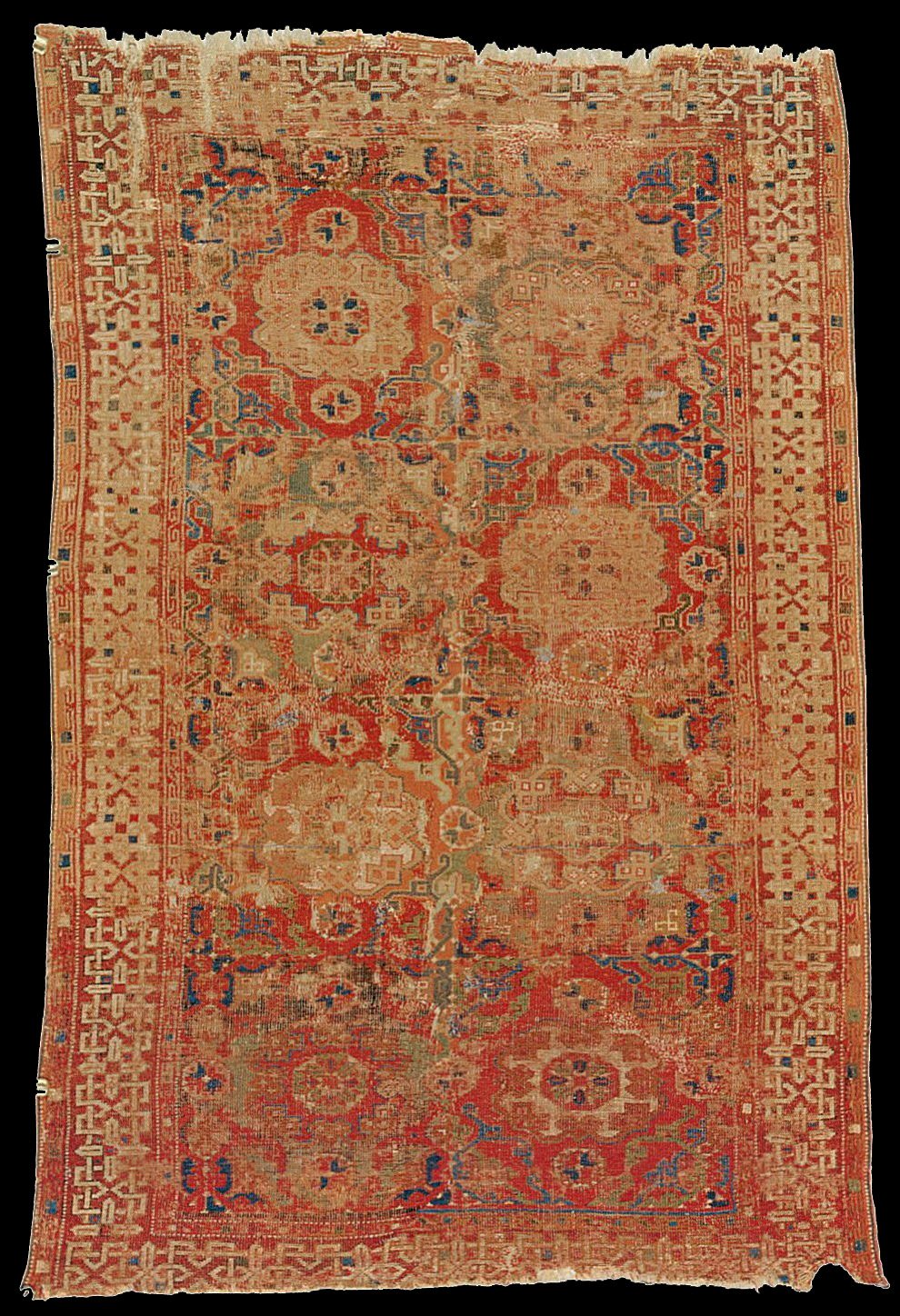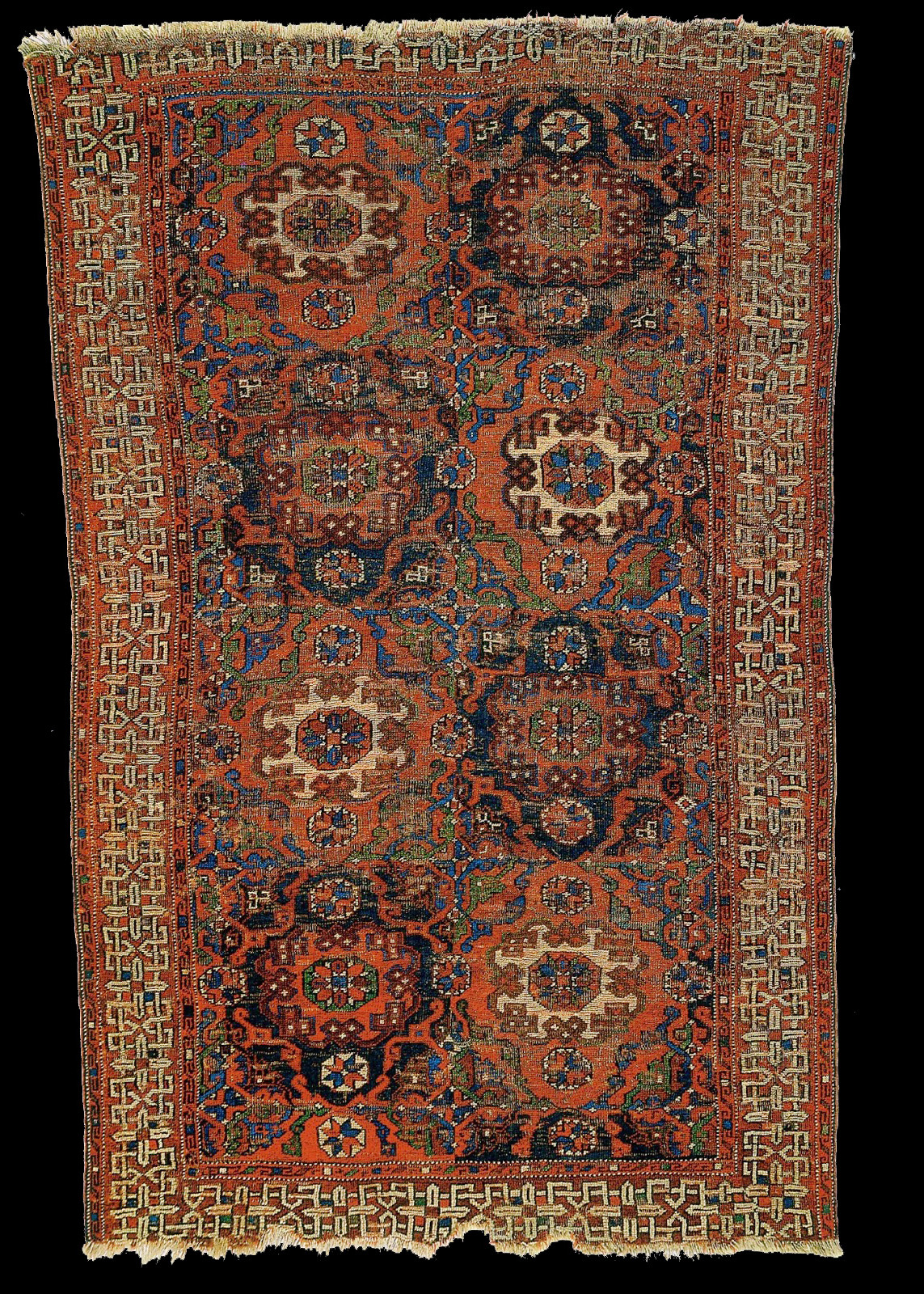|
Oriental and European Rugs and Carpets
Sotheby's Sale: W02870 |
Location: London, Olympia
Auction Dates: Session 1: Wed, 27 Feb 02
2:00 PM
LOT 39 (of 83)
Property of Various Owners
fW - A
'Small Pattern Holbein' rug, West Anatolia, first half 16th century
15,000—20,000 GBP
measurements: 176 x 113cm; 5 ft. 9 in. x
3 ft. 9 in.
Description: This lot contains 1 item(s).
The 'Small Pattern Holbein' design is named after the artist Hans
Holbein the Younger, a similar rug appearing in his Portrait of George
Gisze of 1532. Holbein was, however, by no means the only artist to
depict a rug of this group in his work and many examples can be
identified in European painting from the mid 15th to the mid 16th
century. Other than the Holbein portrait mentioned above, some of the
most famous examples include Piero della Francesca's fresco San
Sigismondo e il Malatesta, 1451, Tempio Malatestiano, Rimini; Andrea
Mantegna's Madonna and Child with Saints, 1459, San Zeno, Verona; and
The Somerset House Conference by Juan Pantoja de la Cruz, 1604, The
National Portrait Gallery, London (see Mills, John, 'Small Pattern
Holbein' Carpets in Western Paintings, Hali vol. 1, no. 4, 1978, pp.
326-334).
The particular variation of the 'Kufic' border seen
on this rug is classified as the 'C1' type by Pinner, Robert and
Stanger, 'Kufic' Borders on 'Small Pattern Holbein' Carpets, Hali,
ibid, pp. 335-338. The chronology of the rugs of this group is far
from certain, but it seems that the type 'C' border is more frequently
encountered in 16th century, rather than 15th century, examples.
For related examples at auction, see Sotheby's New York, 15
December 2000, lot 60; Christie's London, The Christopher Alexander
Collection, 15 October 1998, lot 218 and Christie's London, 12 October
2000, lot 201. These three examples were all fragments, whereas the
present lot, although very worn and damaged, is a complete example.
|


